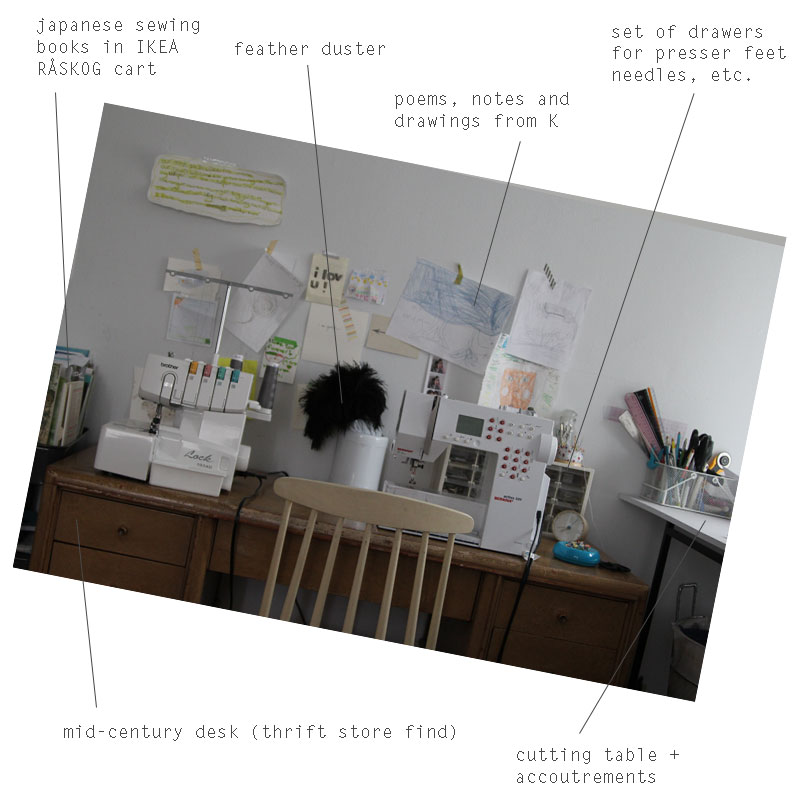Good morning! I did sew something for K: an absolutely dull blue and not particularly attractive Seahawks tee-shirt at my daughter's request, because she -- much to my shock -- is a football fan. Who knew parents completely oblivious to the Superbowl would produce a gung-ho 12th man? 12th man is the term used for a Seahawks fan, as I understand it, but don't hold me to it. But why subject you, my discerning friends, to a stenciled tee yet again? Instead, I thought it might be a little more ... Read more
My Little Sewing Space
This might be the longest I've gone without sewing anything for myself since I started to make my own clothes. I miss it, but I'm time poor at the moment, and when given the chance, I tend to choose sewing for K or tidying for the sake of mental sanity. In a little while, however, I'll be able to get back to some grown-up sewing...I've got my denim washed, pattern pieces cut out, jeans hardware at the ready and if I don't get started on these skinny jeans soon, there's a risk that it'll never ... Read more
Let’s Talk About Fit
So I've been sewing for a while. A quick glance through the archives will tell you that my style has been predominantly muu muu meets prenatal wear when sewing for myself: comfortable, easy, fairly shapeless, ideal for all-you-can-eat-buffets. I absolutely love my potato sacks, and one of the things I've discovered about myself through sewing is that I am not the perfectionist that I thought I was. Thread not matching exactly? Eh. Pocket placement out of alignment? Whatever. Skirt waist doesn't ... Read more
My Fave Sewing Tools
So, not a lot of sewing is happening this week, though that's going to be changing as soon as I turn in my sketches by Saturday. In the meantime, I rounded up some of my favorite sewing tools, just because. When I first started sewing about six years ago, I didn't really know what supplies to gather beyond a sewing machine, iron, ironing board, pins and shears. I had fabric too, of course, but the whole world of notions was a mystery. Because I didn't know what to get, I got everything. I saw ... Read more
Seam Allowance Curve Ruler
As I down coffee after coffee and scurry about with watercolor pans and digital painting tools in the background, I deigned it high time I finally cross off an item from my "must-write posts list" (lists breed like bunnies in my notebooks). One of the distinctions of Japanese patterns is that seam allowances need to be added. I know that this is often a turn-off for many folks, but I happen to love it. There's something about adding that extra 1 to 3 centimeters to the traced pattern pieces ... Read more




